Crapemyrtle bark scale confirmed in South Carolina
(Deep sigh), it’s official. Clemson University Department of Plant Industry (DPI) announced last Wednesday that crapemyrtle bark scale (CMBS) has been found in landscape sites in Columbia, South Carolina. Folks from Texas to Tennessee, Virginia to Florida, are probably thinking, “What’s the news? We've had this beast for years!” Well, nurserymen and landscape care professionals in South Carolina have always felt kind of lucky that CMBS hadn't been found in South Carolina, although crapemyrtle trees from elsewhere in the South have been covered in white fuzz, shiny honeydew and black sooty mold for years. Lady Luck seems to have forsaken us.
I knew better than to hope that we wouldn't get the bugs. If our neighbors are infested, it’s just a matter of time before we find an infestation. It’s actually kind of odd to me that South Carolina stood out in a sea of honeydew and sooty mold!
Amanda McNulty, host and producer of Making It Grow, did a radio story about CMBS on our local NPR station. On September 1, a listener in Columbia alerted Amanda to a suspected infestation in the Columbia area. Amanda alerted DPI and kept the diagnostic service and me in the loop. The infestation was confirmed as CMBS shortly after that.
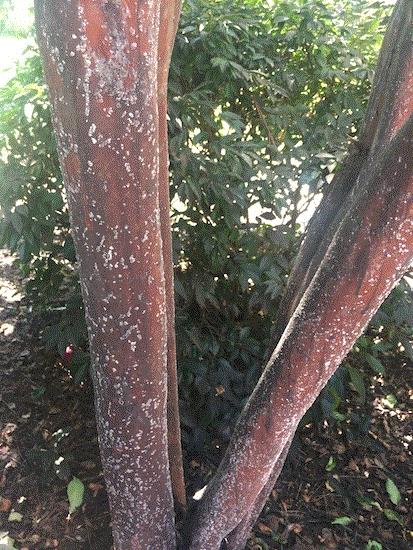
A crapemyrtle tree heavily infested by crapemyrtle bark scale in Columbia, South Carolina. (Photo credit: M. Foster)
This is big news for South Carolina. While many think camellias are quintessentially southern, it’s in fact crapemyrtle that reigns supreme. An empty corner in the yard? Stick a crapemyrtle there! Want a big tree with lavender flowers? Got a crapemyrtle cultivar for that! Want a small bush with pink flowers? Here’s a crapemyrtle. Think your neighbor is too annoying? Stick a whole hedge of crapemyrtles between you!
I’ll be developing management recommendations for green industry professionals in the coming days. Luckily, quite a bit of management information has already been generated by the CMBS Working Group (with support from the USDA Specialty Crop Research Initiative). There are two management approaches. One is a drench of imidacloprid or dinotefuran in the root zone of the infested trees soon after bud break. The second approach involves repeated foliar sprays (every two weeks) of bifenthrin, dinotefuran, buprofezin or pyriproxyfen beginning at the time of crawler emergence. The crawler emergence time is around mid-April and early May in Texas, but the exact timing in South Carolina is unknown. Also, I'd probably stay away from bifenthrin if I could because bifenthrin is known to be detrimental to natural enemies, and CMBS-infested crapemyrtles are crawling with ladybeetles, lacewings and other beneficials!
Yup, one more scale insect species on my “to-work-on” list. OK, secretly, my nerdy self is pretty excited about that.

Gloomy scale got you down?
It sure did to me for the past 12 years. Truth be told, although my training was in mealybugs, I didn't really pay much attention to scale insects, the cousins of mealybugs, until I started my current position with Clemson University. I had witnessed what they can do to trees in urban forestry and landscapes during my extension calls across the southern United States. Gloomy scale, Melanaspis tenebricosa, is one such species that left a strong impression on me.
I find gloomy scale all over the place, including this population in the parking lot of the City Hall in Florence, South Carolina. I’ve seen more gloomy scale, and the red maple trees that are damaged by them, particularly in the cities. Poor growth, thinned canopy and dieback are the symptoms of infestation. Red maple trees stressed by environmental factors (such as heat, compacted soil and covered roots associated with paved surfaces or parking lots) are more prone to damage. A series of studies by Steven Frank and his students and colleagues at North Carolina State University shows that heat islands in urban areas favor gloomy scale outbreaks and climate change will not help with the situation.
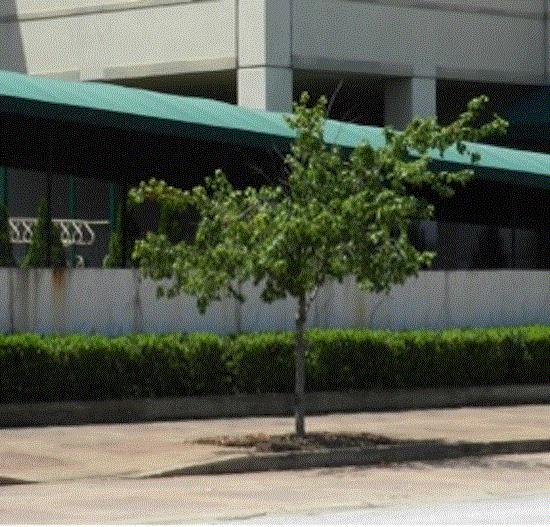
A red maple tree infested by gloomy scale in downtown Spartanburg, South Carolina. (Photo credit: George Dickert, Clemson University Extension)
Upon closer look, you’ll find the scales feeding on the twigs, branches and trunk. The covers, or shells, of adult female gloomy scales are about 1/16th inch across, rounded, dark grey and often with a pale ring around the center of the shells. Often they cluster in large numbers in a small section of twigs, making the twigs and branches look almost black. When the shells of dead scales fall off, white or pale rings are left behind and become highly visible. The crawlers are yellow and tiny (1/64th inch long).
Gloomy scale has one generation per year. Crawlers emerge from under the shells of the adult females beginning in late May in the Carolinas and in early July in Maryland. I found that crawlers emerge continuously for over a month. In some years, they emerge over almost two months! They become adults in mid-August, and the adult females overwinter.
I always question the logic behind widespread planting of red maples along city streets in just about every city I have the pleasure of visiting. Urban environments are not exactly the most suitable habitat for red maples; stress makes them susceptible to all kinds of insects and diseases. If I have a chance to design an urban landscape, I probably won't choose red maple. Since Ask-JC-Before-You-Do-Anything Consulting, LLC. will never have that chance, I guess I’ll just talk or write about it until someone listens.
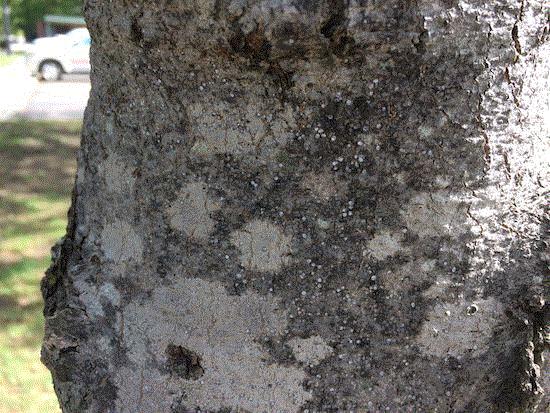
A population of gloomy scale (gray and white "pimples") on a red maple tree in downtown Florence, South Carolina. (Photo credit: JC Chong)
If I want to avoid the problem, while (with a grimace) sticking with red maples, I’d start by doing proper site preparation for installation. Steve Frank and his research team recommend avoiding red maples if the surrounding impervious surface is greater than 60%. If I was managing red maple trees in city streets, I’d try to alleviate as much stress factors from the existing trees as I could. Some irrigation goes a long way to reduce stress on the red maple trees. But, avoid fertilization to established trees because excessive fertilization (especially nitrogen) often induces more pest problems.
Gloomy scales are juicy and nutritious, so many predators and parasitoids feed on them. But, natural enemy populations are often not effective in regulating scale insect populations in the urban landscape because of warmer temperatures, a lack of refuges and alternative food sources, and the use of broad-spectrum insecticides (such as organophosphates and pyrethroids) for management of other insect pests or mosquitoes. When choosing insecticides to control gloomy scale, avoid foliar sprays of carbamates, organophosphates, pyrethroids and neonicotinoids because these chemicals can reduce natural enemy populations and cause more problems down the road.
My experience tells me that soil drenches or granular broadcasts of neonicotinoids or other systemic insecticides are mediocre at best in reducing gloomy scale populations. The best options are insect growth regulators (buprofezin or Talus, and pyriproxyfen or Distance) and horticultural oil. Tank mixing oil and an insect growth regulator are synergistic. These products must be applied on a biweekly or three-week basis during the period of crawler emergence for them to be effective, i.e. from late May through June in the Carolinas. Application timing may be bit earlier further south, and a bit later north of the Carolinas. Crawler emergence periods will change from location to location, so it is best if you chat with your local extension personnel to determine the best timing. I like to monitor for crawler emergence by wrapping black electrical tape, sticky side out, on an infested branch, and look for yellow crawlers stuck to the tape. Dormant oil applied before bud break also achieves decent reductions in infestation.

It's raining bugs!
Jennifer Zurko, the managing editor of GrowerTalks, has the good fortune of traveling as part of her job. She was at the Plug & Cutting Conference, saw something really cool, and contributed the following piece. Thanks for the news, Jennifer!
But good bugs! By drone, no less.
Something that caught my eye while I was walking through the trade show part of the Plug & Cutting Conference last week was Parabug, a very large drone that helps to spread biological insects over outdoor crops.
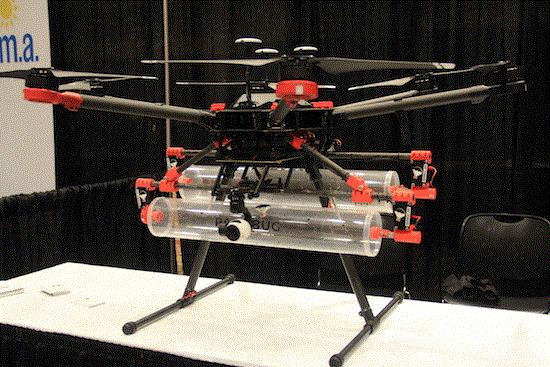
A parabug drone. (Photo credit: Jennifer Zurko)
Chandler Bennett was working for a strawberry company in Salinas, California, and, while he was thinking of ways to save on labor costs, he came up with the idea to essentially combine a drone with a bio sachet. The drone flies over the plants while the two rotating drums—which are covered in holes—sprinkle predatory mites. (The drums immediately made me think of a bingo ball machine.) The biologicals and the sawdust they come in are lightweight, so drones are the perfect delivery service for them.
Growers “hire” Parabug to come and disperse bios to their fields and they can choose whichever beneficial bugs they want and from any vendor (although the Parabug people have a list of vendors they work with if you don’t know any). Jaclyn, Chandler’s wife and business partner, said that it costs about $13 to $17 per acre and Parabug can cover about 500 acres a day. Parabug has only been around for about two years, but in that time, they’ve helped fruit and vegetable field growers, tree and shrub nursery growers, and now they’re just starting in ornamentals.
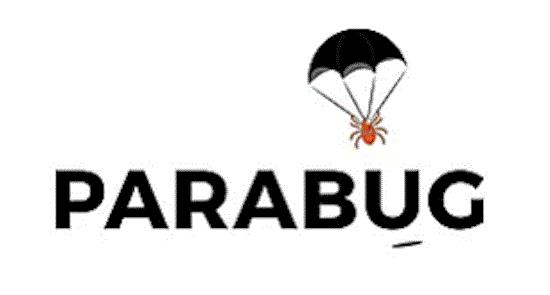
Now, Parabug is way too big to fly around a typical greenhouse, so it’s really suited for outdoor production, like for mums or perennials. Unfortunately, finicky Chicago weather prevented me from getting to the conference when I wanted, so I missed Parabug’s demonstration during the tour at Metrolina, but you can go to their website to see a video of it in action.
Oh, and their logo is super clever—a parachuting bug—hence, the name “Parabug.” Get it?
Wage and benefit surveys
The last item for this week will give you a chance to win a new 128GB iPad!
Participate in the 24th Annual GrowerTalks Wage & Benefit Survey (for growers) and the 11th Annual Green Profit Wage & Benefit Survey (for retailers and grower-retailers), sponsored by Florasearch, Inc. The surveys have twelve (GT survey) to thirteen (GP survey) questions on operation, staffing and salaries, which I’m sure you can answer in less than ten minutes. Enter your email address in the last question and you’ll have a chance to win the iPad.


The 2018 GT Wage & Benefit Survey saw many of you responding to intractable labor shortages by buying new equipment or paying higher wages. Have you carried out your plans? How did it work out? Tell us your current status and outlook. We’ll be collecting the surveys until October 19th and sharing the results in December.
For the GrowerTalks grower survey, click here.
For the Green Profit retailer and grower-retailer survey, click here.
See y'all next time!

JC Chong
Professor of Entomology at Clemson University
This e-mail received by 25,324 subscribers like you!
If you're interested in advertising on PestTalks contact Kim Brown ASAP!